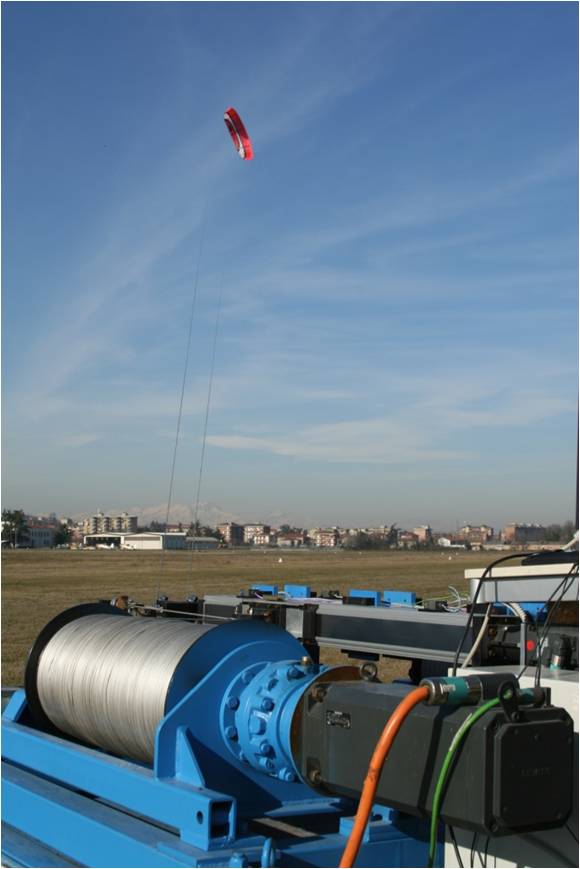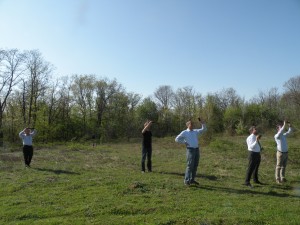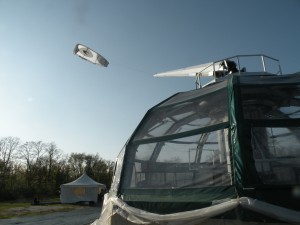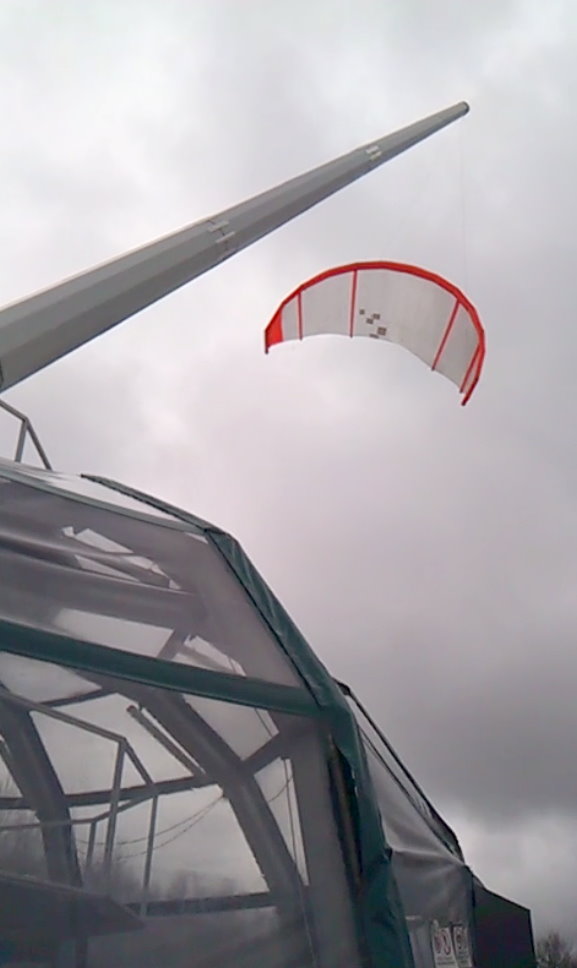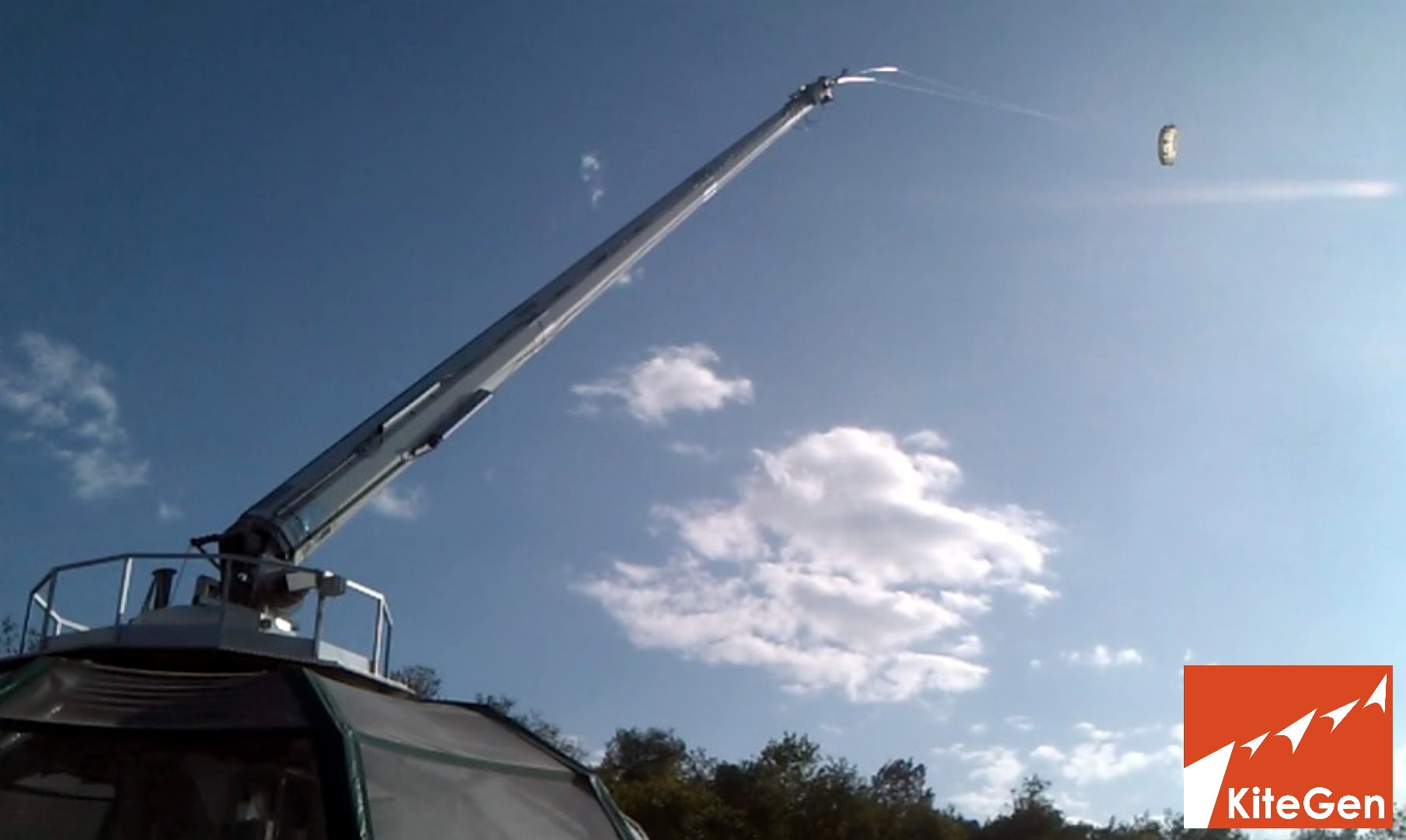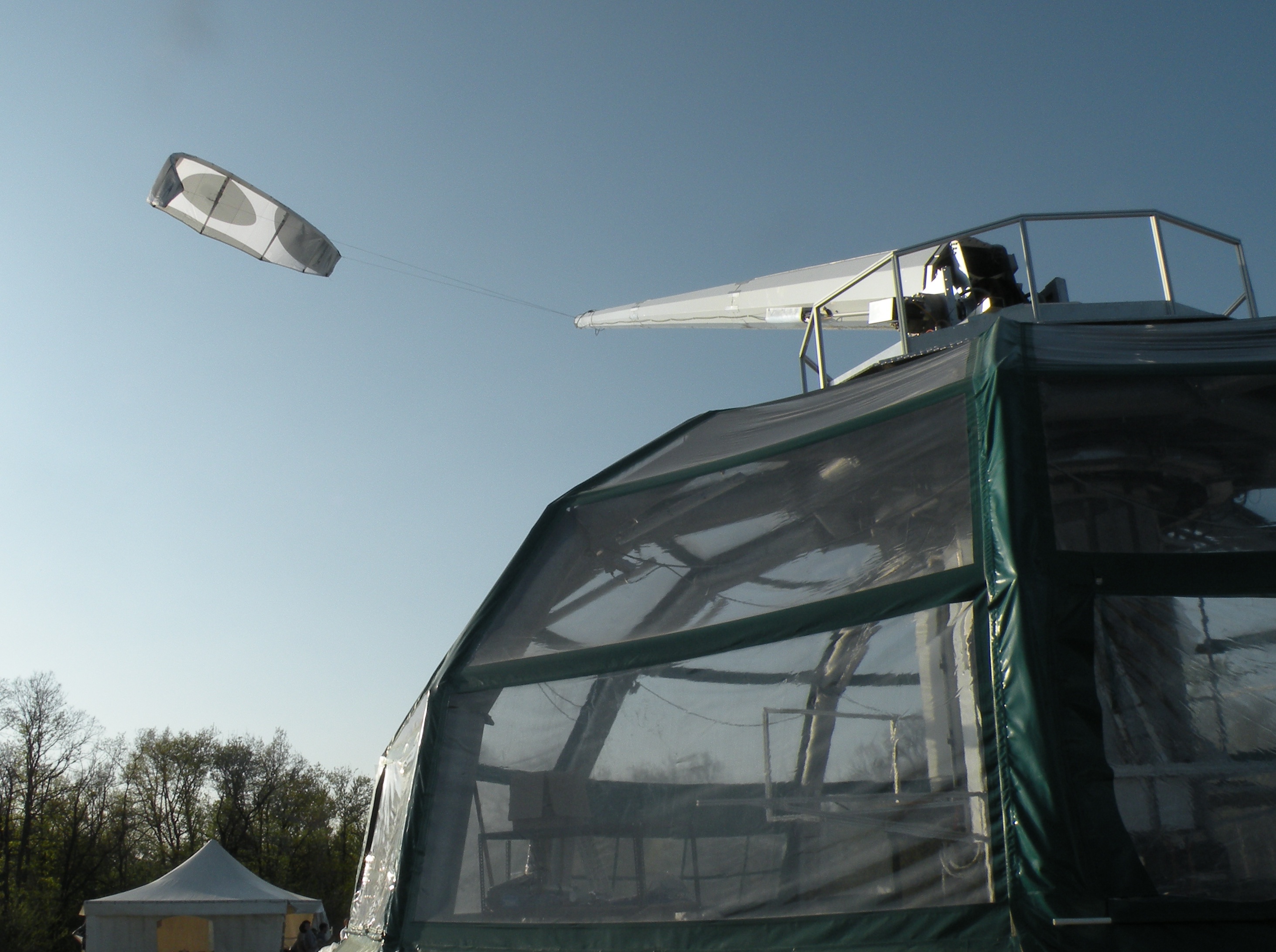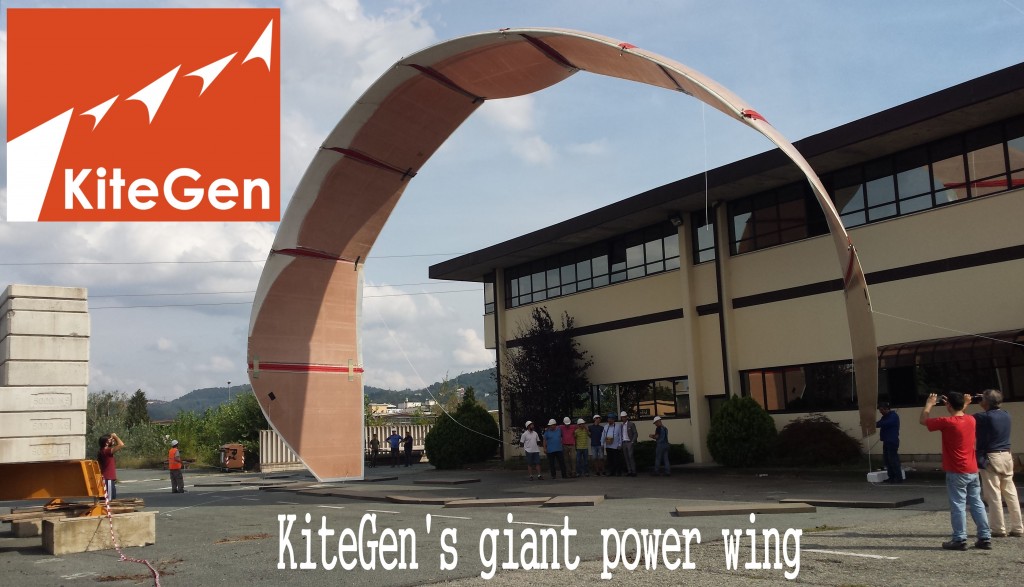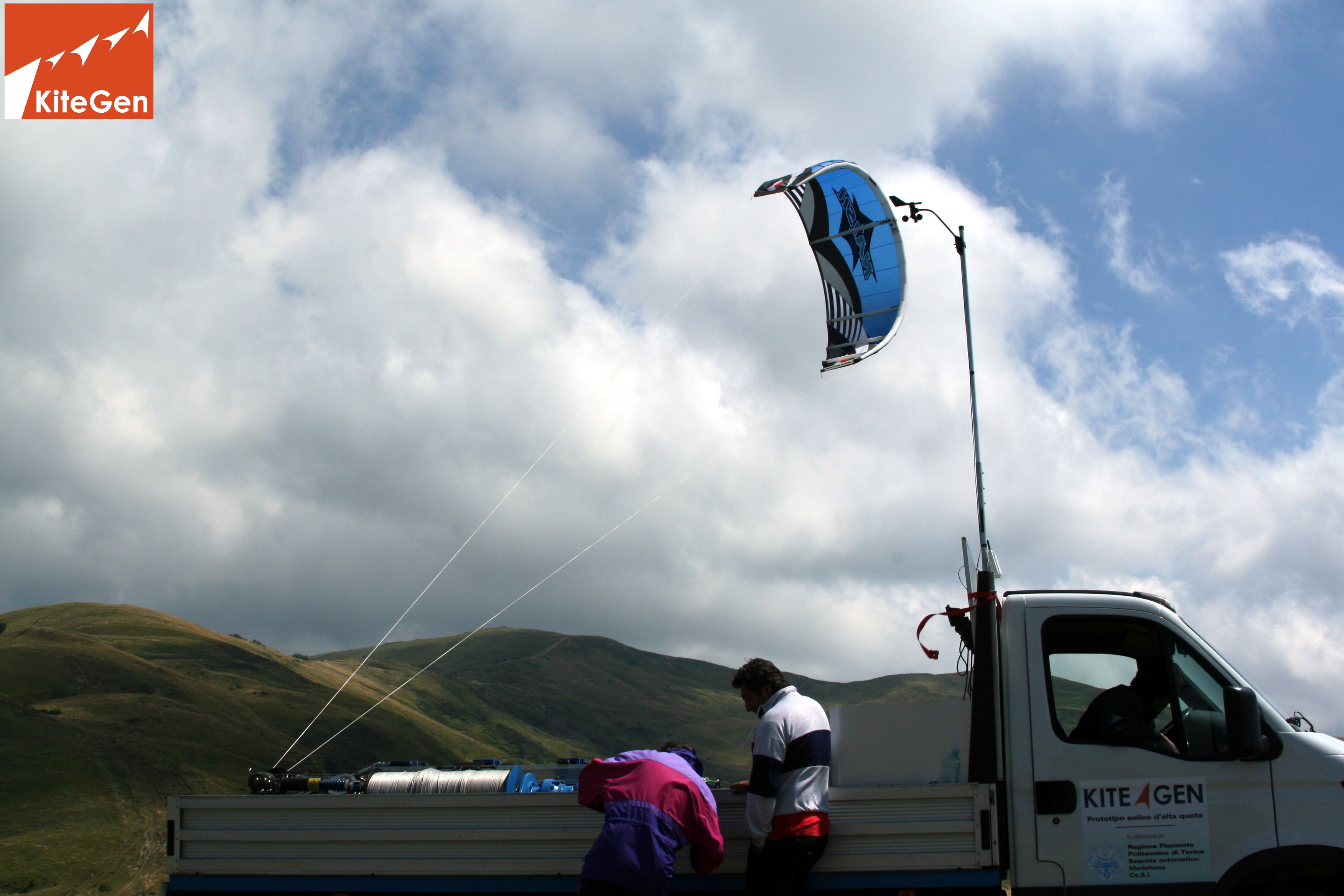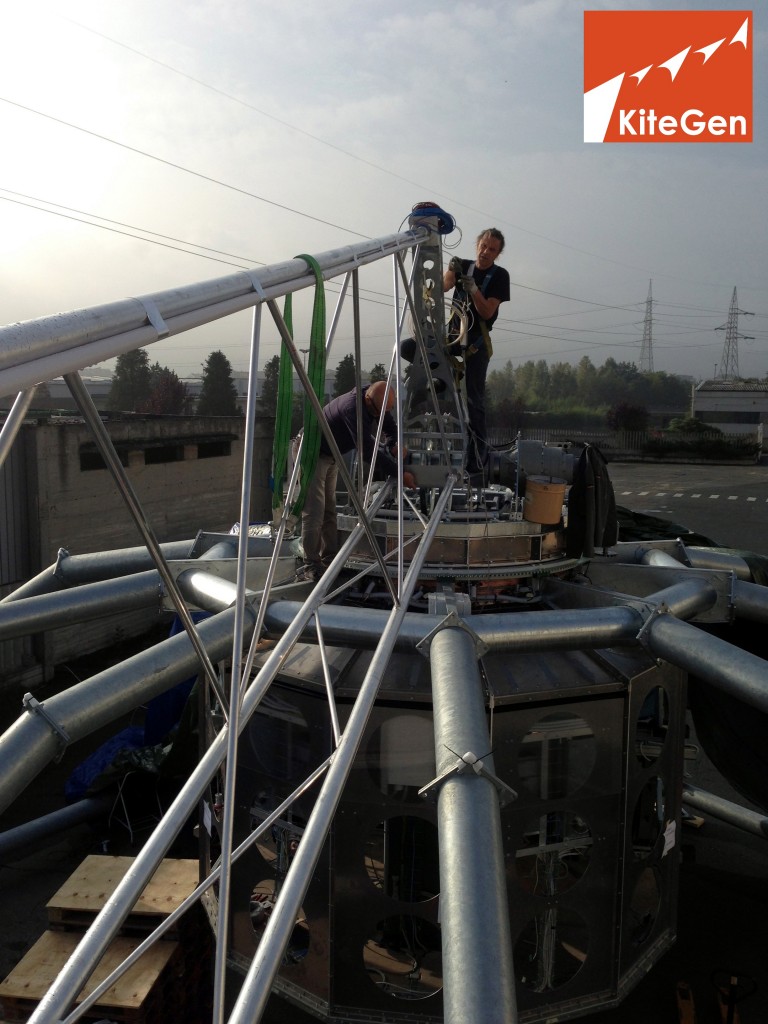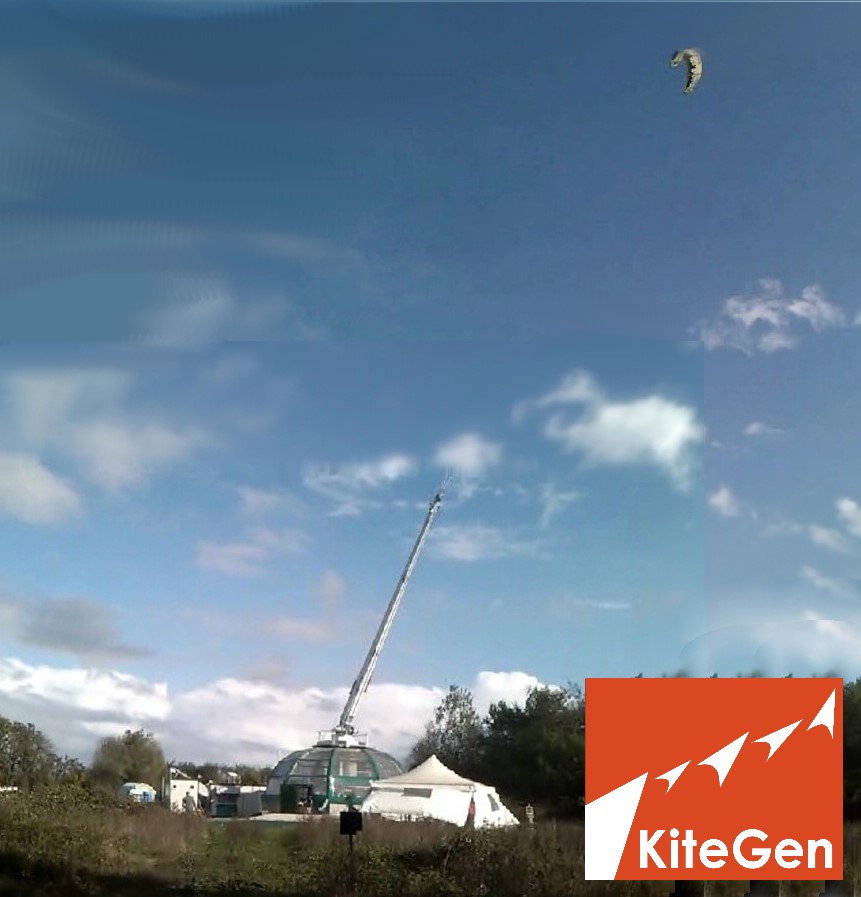Past, Present and Future Tests
You can also download the video from here
From Andrea Papini
Edited by Stefano Serra
Many of our followers ask for more details about the tests performed so far, and the ones running right now. First I would like to illustrate the results that were obtained from the first prototype, in order to have a clearer picture about the work we are doing now.
Different test activities necessarily follow each stage of design and development, in particular for an innovative machine like the KiteGen Stem, that represents the most advanced technology in this new sector and a level of details never conceived so far.
Validation tests of the KiteGen technology started in 2005-6, when a first prototype, called Kite Steering Unit 1 (or KSU1) proved that it is possible to transfer the strength of the wind at high altitudes in order to produce energy with a YO-YO cycle (the KSU reached an height of 2500 m a.g.l. with peaks of 60kW)
The Yo-Yo cycle consists of:
An active phase in which the kite gain height unwinding the two cables and operating the motor-alternator and hence producing energy while reaching a maximum altitude.
A passive cycle in which the motor-alternators act as motors and reel the kite to the minimum height of operation, consuming a fraction of less than 1% of the energy produced in the active phase; the cycle then restarts.
The several tests sessions performed with the KSU1 included includes a big amount of so -called “flying hours”. In slightly more technical terms the flying hours have been classified into different types of test flight manoeuvres (modules). For example: “Take off tests”, “Production of electric power”, “Safety in case of wind burst”, “Side-slip manoeuvre” etc.. Tests also included some operations on the ground to change the wing set-up, replace cables, and some other variables of the KSU1.
I would also point out that the tests on the KSU1 were “boolean”, hence focused on succesful repetition and optimization of each manoeuvre. Tests were also performed on the whole “yo-yo cycle” (which is the union of the various operations) however this was not the main object of study because as with every first test a complex system, it is good practice to test the each modules of which is composed, like links in a chain.
The test results have demonstrated the effective productive potential of electric power (great success of the module “manoeuvres for the production of electric power”), which was a result of historic value, that has not penetrated the minds of media, institutions and investors as we expected. However, these tests have also shown that the first small-scale prototype KSU1 was inadequate to perform the full yo-yo cycle, this for two main reasons:
1: The inability to safely handle the kite in case of strong gusts of wind (problems in the module “manoeuvres for safety in case of wind burst”);
2: The inability to dissipate the heat accumulated in the KSU1 pulleys.
At that point, it was necessary to redesign the generator so that would resolve those problems. Since the productive potential had been demonstrated successfully, in order to shorten the time it has been chosen to point directly to an industrial prototype. As outcome of these activities the KiteGen team obtained:
1: A new structure designed with the implementation of “stem” to absorb the gusts mechanically; 2: The FEM designed "igloo" acting as a big spring in order to limit the 2m diametre bearing peak forces; 3: The diametre, operation and orientation of drums and pulleys have been modified; 4: A cooling system has been integrated; 5: A manipulator has been envisaged at top of the stem, in order to further help take off procedures.
From this work, the world’s first “KiteGen Stem” came into being.
with this new configuration is now possible to test:
1: Module "manoeuvres in safety in case of wind burst" with the aid of the stem; 2: The efficacy of the cooling system (it has been oversized in design phase); 3: The new "forms of automatic take off" (actual testing); 4: Different kite flight paths in order to optimize the production; 5: The active dampening of frames oscillations due the wing dynamic. Many other tests will be performed to evaluate the efficiency, affordability and endurance of the generator and its different components.
As soon as the boolean tests on the various modules will be finished and validated, we will focus on testing yo-yo cycle in continuous mode in order to validate the predicted power curve and its endurance
Briefly it means that repeated full cycle tests will start when we will have verified that the KiteGen Stem is fully functional. These final tests will be set the ground to start the optimization of productivity and final manufacturability of the system as a whole. All of these steps are performed by the KiteGen Team keeping in mind that “ A chain is not stronger than its weakest link” and we are carefully focusing our limited resources on each single step.
We know there are many out there waiting for us… just a little more patience and especially support.
